
Skoda Superb Estate (2015-2023) engines, drive and performance
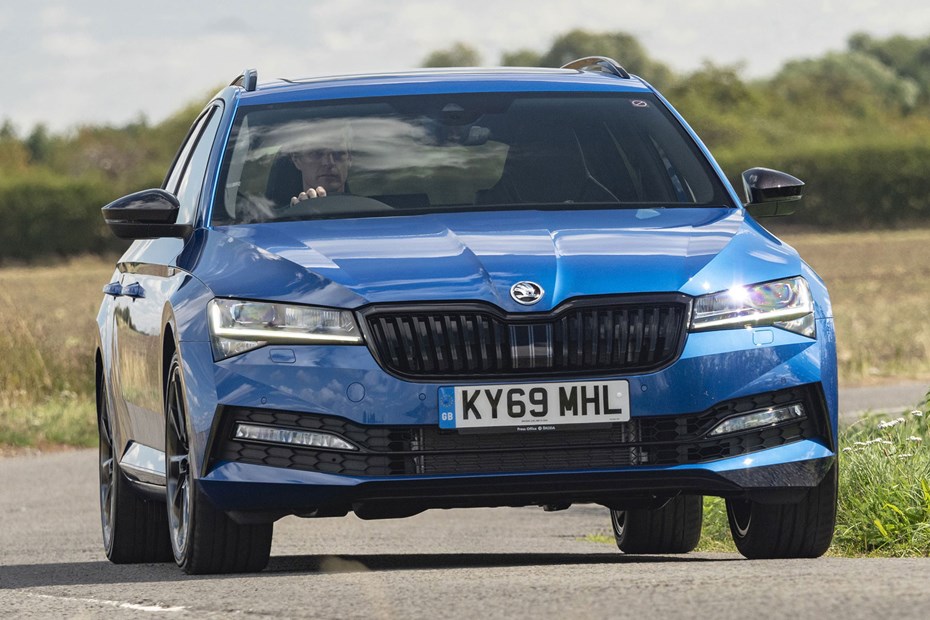
- An impressive range to choose from
- Most powerful 272hp version is a 155mph car
- Plug-in hybrid is smooth, powerful and economical
As with its hatchback counterpart, the Skoda Superb Estate has a selection of engines that provide performance ranging from adequate to surprising.
Petrol engines
Kicking things off is a 1.5-litre TSI turbo-petrol with 150hp and 250Nm of torque. The only engine available with a choice of manual or automatic gearbox, it’s a quiet and refined engine that will suit lower-mileage drivers who don’t spend too much time on the motorway. It’s smooth for the most part in the Superb, but can feel a little slow to get going at times. Once the revs rise, it can feel much perkier, but also a bit noisier. The 0-62mph dash takes 9.1 seconds, while top speed is 130mph.
Next is a 2.0 TSI 190hp that replaced the older 220hp unit. It’s smoother and quieter than it is in the equivalent Passat, and is actually very relaxing. 0-62mph time of 7.7 seconds makes it surprisingly keen, and the standard-fit DSG transmission works well.
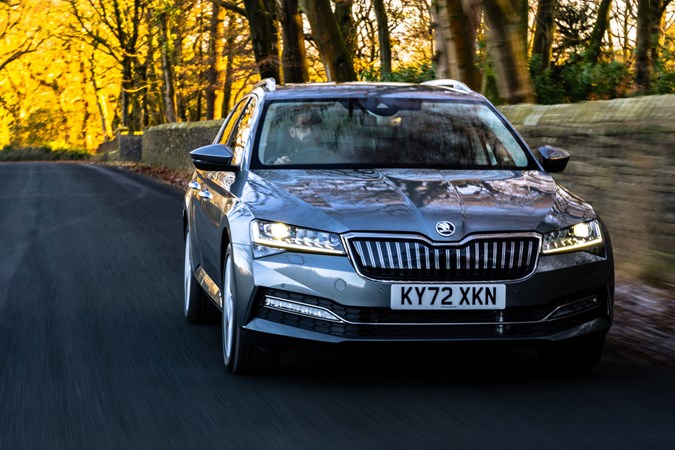
Topping the performance chart – and bottoming the efficiency rankings – is the 272hp edition of the 2.0-litre TSI, complete with four-wheel drive. Torque is 350Nm (30Nm more than the 190) but available at a slightly headier 1,700rpm. This Superb will reach 155mph and dart from a standstill to 62mph in a sports car-like 5.8 seconds, but economy drops to around 30mpg.
Diesel engines
Choose any one of the diesel motors for greater fuel efficiency over longer journeys. Entry-level is a 1.6-litre TDI producing 120hp, with 250Nm of available from 1,500rpm. Coming with a seven-speed DSG only, it’ll reach 122mph and completes the 0-62mph sprint in 11.3 seconds.
A 150hp 2.0-litre TDI has been available throughout the Superb’s life – and has been the most popular choice with buyers. In 2019 the engine was replaced with another 2.0-litre TDI with 150hp, but with an Evo designation meaning that its been optimised to be lighter and more fuel efficient.
The most powerful diesel is a 190hp 2.0-litre TDI. In front-wheel drive form it’ll get from 0-62mph in 8.4 seconds, and then on to a top speed of 142mph. Go for the 4x4 version of this car and the 0-62mph time drops to 8.1 seconds, with top speed falling to 138mph.
This engine is a great fit in the large Superb, thanks in most part to its 400Nm of torque on offer. It makes light work of long journeys on the motorway.There’s a bit of diesel drone at times, but most of the time it’s all very hushed and refined.
Plug-in hybrid engine
The most recent addition to the range is a plug-in hybrid version called the Skoda Superb iV. It uses a 1.4-litre TSI petrol engine in combination with a battery and electric motor for a total system output of 218hp. Performance is effortless on the road and won’t disappoint most owners – 0-62mph comes up in 7.4 seconds while the maximum speed is 140mph.
The electric motor gives it an all-electric driving range of a claimed 35 miles, and charging it up takes three to four hours from a wallbox or public charging station. It switches between EV and Hybrid power smoothly, and automatically starts up in E-mode.

It’s especially effective around town where it’s smooth and silent, but the engine kicks in quietly when more power is needed. A choice of driving modes lets you prioritise power or efficiency, and you can adjust the level of regenerative braking via the gearlever. If you want to top up the battery using the engine, there’s a mode for that.
We found that leaving the car in Hybrid mode with the usual Comfort settings to be the most effective for the Superb if you’re not in a hurry. That way it retains its refined and comfortable nature, but also leaves it to its own devices to work out which is the best way to operate in balancing whether it uses battery or engine power.
What’s it like to drive?
- Ride comfort is generally excellent
- More of a cruiser than a racer
- Quite a bit of body roll in the corners
If you want your large family car to feel comfortable and assured then the Skoda Superb estate is a natural choice for it has those qualities in spades. It’s stable, composed and highly effective. But it’s not a natural driver’s car like a BMW 3 or 5 Series. Not that it ever pretends it will be.
Cars with the Drive Mode Select function can alter accelerator response and steering weight, as well as other less obvious features such as the air-con efficiency and dynamic lighting patterns. That range-topping L&K also comes with Dynamic Chassis Control (DCC) as standard (as do all iV plug-in models), while Sportline models feature lowered sports chassis. All other models except entry-level S cars can be specified with this at extra cost.
There’s a noticeable difference, particularly with the suspension settings, but in most instances the Superb estate feels at its best in Normal mode. The firmness of Sport is at odds with the Skoda’s comfortable-bias nature, whereas Comfort is ironically a tad too soft, causing the large body to wallow over heavily undulated surfaces.
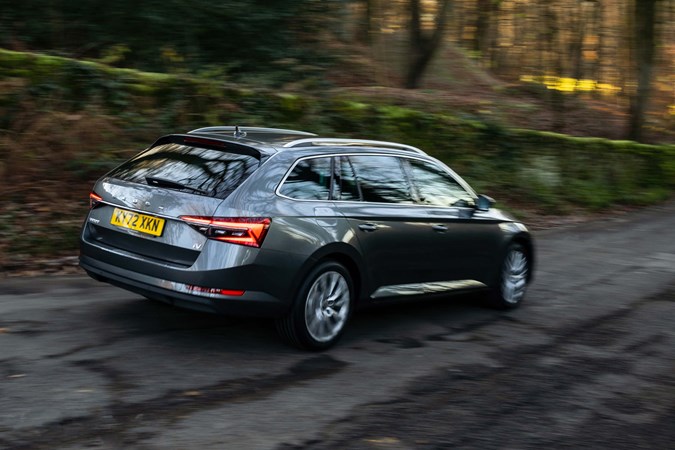
It’s a similar situation with the steering, the weighting of which is either too light or heavy without increasing or decreasing the amount of ‘feel’ transmitted through to the driver’s hands. That said, the Superb estate does hang on gamely around bends, benefitting from the electronic differential to maintain tight lines around corners.
Overall, then, a capable performer that’s biased towards comfort. You’ll find it leans noticeably in the bends – a sensation exacerbated by high seating position – but we suspect many owners happily put up with this given the way it can smooth out bumpy surfaces.
A final note for the DSG transmission. This is fundamentally fine, but the Superb doesn’t have the most responsive application of this technology. As a result, it can feel a little too lazy and hesitant at times – behaviour that’s been taken care of in other vehicles fitted with this kind of gearbox. It’s fine if you’re not in a hurry, though, which again suits the overall nature of the car.


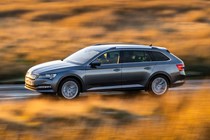
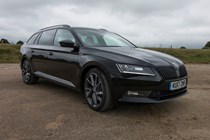
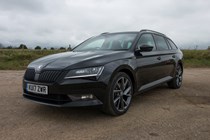
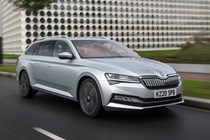
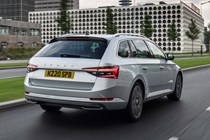
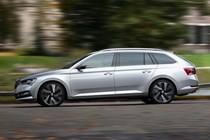
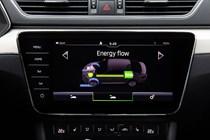
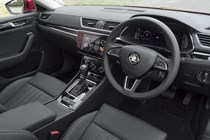
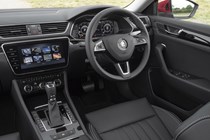
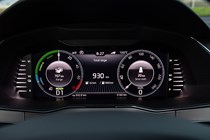
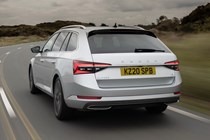
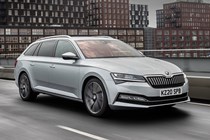

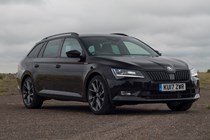
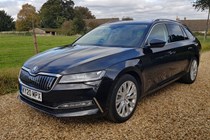
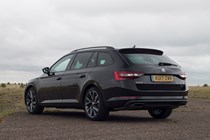
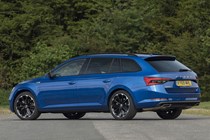
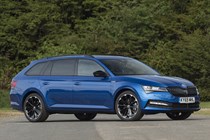

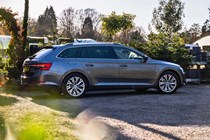

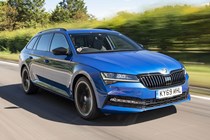
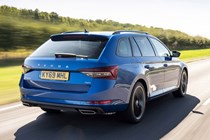
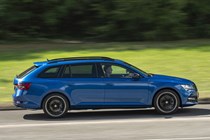
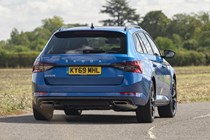
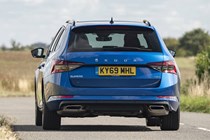
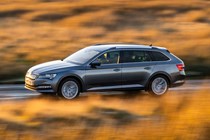


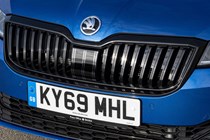
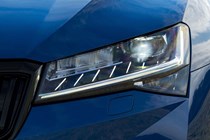
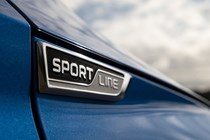
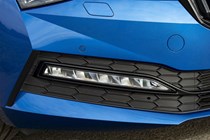
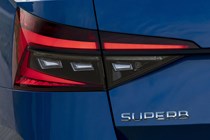
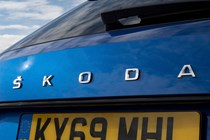

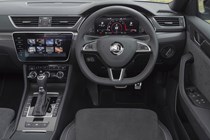
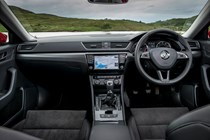
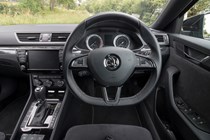
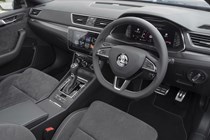
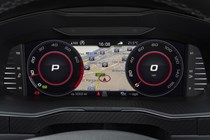
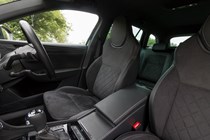
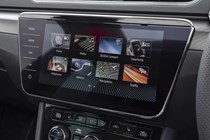
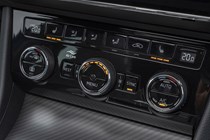
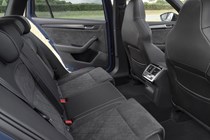
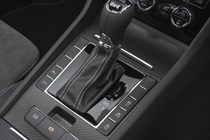
.jpg)
.jpg)
.jpg)
.jpg)
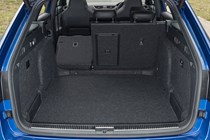
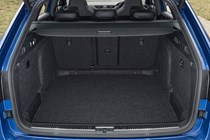
.jpg)














































.jpg?quality=50)
.jpg?quality=50)
.jpg?quality=50)
.jpg?quality=50)


.jpg?quality=50)